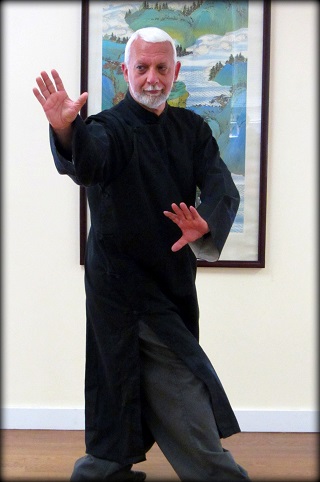| Home | ||
|
|
||
| Internal Martial Arts | ||
| - | Philosophy | |
| - | History | |
| - | Tai Chi Chuan | |
| - | Hsing-I Chuan | |
| - | Bagua Zhang | |
| - | Further Reading | |
|
|
||
| The School | ||
| - | General Classes | |
| - | Adult Classes | |
| - | Weapons Training | |
| - | Directions | |
| - | Testimonials | |
|
|
||
| Frequently Asked Questions | ||
Click here to send feedback.
|
||||||||||||
A Short History of Bagua Zhang
Although there is no agreement among historians and authorities on the subject as to the origin of Bagua Zhang, there is general consensus of Martial Activity in the Wudang Mountains from about the year 2600 B.C. onward. The Early Heaven (Hsien Tien) Diagram used to represent the Art of Bagua Zhang, consisting of a number of solid and broken lines, rounding a circle in groups of three is itself derived from the I-Ching or 'Book of Changes' believed to be some 5,000 years old, and whose writing is credited to the Legendary Yellow Emperor Fu Hsi. Originally a book of divination and later a manual for interpreting the order of all things in life, the I-Ching, one of the Five Classics of Confucianism, also promoted correct living, morality, and the harmonious understanding of man's place in the Universe; all concepts generally taught and practiced by practitioners of Bagua Zhang. The central figure in the history of Bagua Zhang is Tung Hai-Chuan, (1798-1879), who is widely credited with the creation of Pakua, or at the very least, its standardization and dissemination through his two principal students, Yin Fu, and Cheng Ting-Hua. Tung Hai-Chuan, throughout his lifetime, always refused to discuss the origins or history of Bagua Zhang, and claimed to have learned his art from a mountain Taoist in Kiangsu Province. His reticense in disclosing information about his art or himself is not unlike that of Chinese Boxing Masters in the U.S. during the 1960's who chose to maintain anonymity possibly due to immigration problems or to a notorious past history. |
||||||||||||

|
||||||||||||
|
Videos
|
||||||||||||
|
Last modified: August 2017 |

